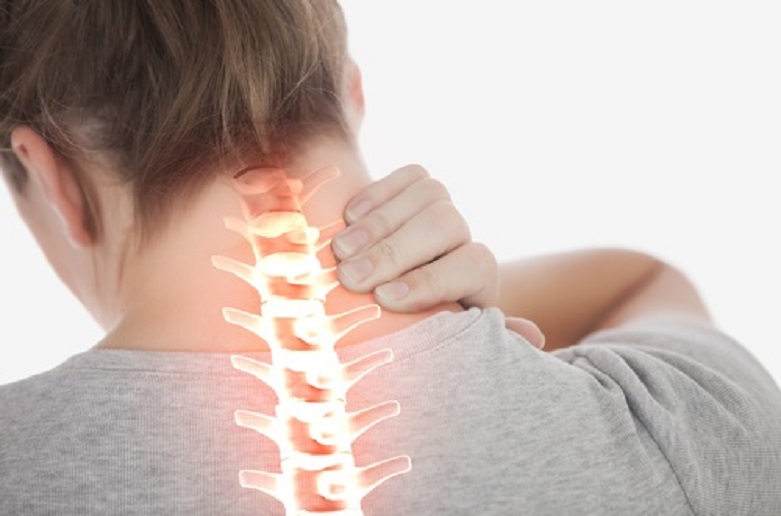Neck pain

There are 6 presentations of neck pain we typically see: neck pain from muscular origin, the aging/degenerative neck, acute wry neck , whiplash, disc herniation and chronic neck pain.
Muscular neck pain
Muscular neck pain can be experienced at any age. It is often felt around the top of the shoulders (trapezius muscle), at the base of the skull in the sub occipital muscles, in between the shoulder blades (rhomboids) and sometimes at the front of the neck in the region of the scalenes. A tension or tightness may also be felt in these areas when moving the neck. Activities that require heavy, repetitive or sustained postures and stress can cause muscular tension in the neck. Trigger point therapy, massage and therapeutic exercise are the mainstays of treatment. Persistent cases can respond to dry needling, particularly areas of tension around the shoulders (traps).
Acute wry neck
If you have felt your neck ‘lock up’ and you are unable to turn to one side you are probably suffering from an acute wry neck. Acute wry neck can cause significant pain and disability but thankfully symptoms usually subside within a week or two. We think the cause may be related to part of the facet joint (hinges in the neck) getting locked or entrapped. There is often significant muscular spasm that accompanies the wry neck. Physiotherapy, heat, taping, rest and analgesics can help the pain and muscular spasm during the acute period.
Whiplash
Whiplash injury is nearly always sustained after a car accident when the head is suddenly jolted forward or backwards. Similar to any joint sprain, when the neck is forcibly moved beyond its limits injury to the ligaments and muscle occurs. In more severe cases fractures and injury to the discs and nerves can also result. In these instances we would always recommend obtaining an x-ray to assess spinal integrity. Symptoms do not always appear at the time of injury, instead muscle spasm/guarding and a limitation of flexibility can develop or worsen up to several days later. In our experience treating a whiplash injury is very different from other neck issues. Firstly it must be recognized that it can take many weeks or sometimes months to make a recovery following a whiplash. Patience is an important aspect of the rehabilitation. Secondly the neck is usually very tender in the early stages and a gentle approach to treatment is what we have found to work best. Strong massage and manipulation often used successfully with other neck pathologies will aggravate a whiplash injury. Gentle massage, traction and movement based exercise are the most successful treatments.
Degenerative Neck
As a person reaches middle to older age changes in the spine begin to develop. The hinges (facet joints) begin to wear and the discs begin to lose their shock absorbing ability. As the spine gets older it is common to experience a restriction with turning or looking up as the facet joints and discs lose their flexibility. When a facet joint is causing pain a patient will often experience a focal sharp pain that blocks rotation or extension of the neck. Physio treatment for this will consist of joint mobilization which involves pushing and manipulating the facet joints to improve the gliding motion of the surfaces and massage to relieve any associated muscle spasm.
Disc Herniation
A disc herniation occurs when the liquid gel (nucleus pulposis) extrudes outwards beyond the fibrous layer of the disc. Often this can put pressure on the nearby nerve roots sending pain from the neck down the arm, into the hand or shoulder blade. The patient sometimes finds relief by taking the tension off the affected nerve by holding the arm above the head. The lower cervical region of C5-7 are the most common levels for this injury to occur. A herniation can result from a sudden injury or because of age as the discs begin to weaken. The degree of pain and duration of symptoms dictate management. Providing symptoms are manageable we will usually recommend physio treatment and a wait and see approach. Traction, nerve glides, massage, analgesics and therapeutic exercise are all effective techniques and usually over time the disc will heal itself. Surgery and more invasive treatments like injections are rarely needed.
Chronic Pain State
Sometimes if pain persists for several months or years despite treatment there can be three explanations:
- There is a problem that has not been properly diagnosed and hence treated appropriately.
- There is significant injury and it is unrealistic to expect a full recovery.
- A chronic pain state is being experienced.
With chronic pain, regions of the body, particularly the neck and back can become sensitized. Pain is often out of proportion with imaging findings and there may be some element of stress and anxiety which is amplifying the pain. It is not uncommon for the patient to be fearful of movement. This is an increasing problem and there are numerous hypothesis as to why it can develop. The inappropriate use of scans and poor explanation of injuries which scare the patient are two possible causes. New treatment strategies which embrace the biopsychosocial model are achieving promising outcomes for patients suffering with chronic pain where treatment is based more on exercise and education.